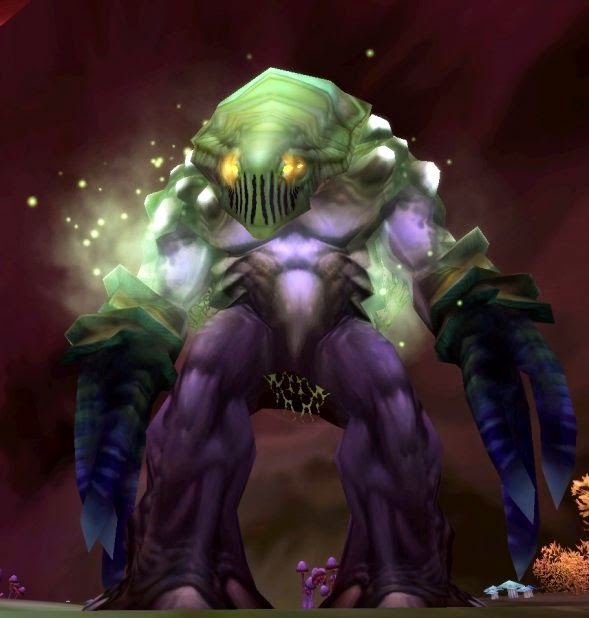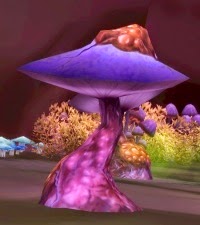Game: World of Warcraft: The Burning Crusade
Game Element: Hungarfen, Dungeon Boss
Discipline: Content Design
So today is the day we talk about giants.
Specifically, bog giants with skills that infinitely scale and force players to dance.
Back in those days, my kryptonite was the development of each boss, so this time, I was so focused on acing it that I overlooked a lot of other small details.
Let’s see how these missed details affected the gameplay.
There are times when you mess things up in a huge way, everyone knows and you can talk about it. Then there are times where you do something well, but messed it up in a subtle way that no one ever recognized.
Today, I want to talk about Hungarfen.

Qualities of a Good Dungeon Boss
There are certain principles which should be present in a good dungeon boss.
It shouldn’t take too long to fight, its abilities should be recognizable, explaining to your party what to do should be brief and the mechanics should be reasonably forgiving but not allow you to simply ignore them.
And the best part?
Hungarfen hit all of these criteria with 3 abilities.
- Underbog Mushroom — Hungarfen summons Underbog Mushrooms at a random location that explode in a cloud of spores after 20 seconds.
- Spore Cloud — Spore Clouds blanket an area, inflicting 1080 to 1320 Nature damage and an additional 360 to 540 Nature damage every 2 sec. for 20 sec.
- Foul Spores — When Hungarfen reaches 20% health remaining he releases foul spores, leeching 400 to 600 health from all players within 20 yards every second for 11 sec.
You might look at this list and say, “What a simple boss – he must be boring.” However, most who have done Hungarfen at an appropriate difficulty level can tell you the fight is surprisingly engaging. Why?
The Principle of Player Focus
When I started working on Hungarfen I expected him to be a throwaway piece of work, a simple meat-sack to pace-out the length of the Underbog. Instead, I learned a valuable lesson about game design.
Geoff Goodman and I were talking about cool ideas for mushroom monster boss and the idea came up of creating Mushroom land mines that you dodged.
However, we found that they resulted in a very binary feel – either you stepped on a mine or you didn’t – meaning the fight was incredibly swingy.
So I set about to fix that. In order to increase the clarity of the fight, I decided the mushrooms should spawn in small and slowly grow over time to give a warning that the mushrooms are about to burst.
Secondly, once they did burst, they dealt damage as a unique DoT which became increasingly punishing the more mushroom explosions you missed.

Then we tested the fight as a pair – I faux tanked while Geoff ran around healing.
We very quickly discovered the fight became trivial, as we could just stand directly on top of the boss and kite it around the room in a circle.
So I set about fixing that. My first thought was to add some gravity pull effects the boss.
But instead, these became very frustrating to deal with – you had no agency over the situation and it would punish pre-emptive dodging behaviour.
Next I tried a stacking AoE that burned people who stood next to each other.
This worked great… unless you were melee.
Then you all just burned to death unless someone else sat to the side crying, wishing they could DPS. (I noted that this “personal sacrifice” mechanic was a worthy one, much like being the bomb on Baron Geddon, but felt inappropriate for a dungeon fight.)
Finally, after some experimentation, I came upon the following goals:
- Discourage swarm stacking.
- Why? I wanted people to think independantly
- Encourage coordination.
- Why? Team work is important.
- Have non-binary results.
- Why? Someone who acts faster should be rewarded appropriate.
The resulting tweaks were:
- The Underbog mushrooms prefer locations in front of your camera
- Players have a better chance of seeing mushrooms as they grow.
- The Underbog mushrooms dealt extra damage up front
- Stacked players will be severely punished if they are clumped up.
- The Underbog mushrooms leave an AoE cloud that reduces usable space over time
- Players who generally move as a group have more time to defeat the boss
- The Underbog mushrooms apply a stacking DoT
- Chain failures are punished more than sporadic ones
- Hungarfen does a short-range AoE lifesteal on everyone at low HP
- The entire party standing on top of the tank will extend the fight a lot.
- The tank and a single dps getting caught in the drain will be mild
The result was a fast-paced fight that was simple to understand, can be learned and improved on-the-fly and finally makes players who dodge all of the mushrooms feel like a badass and teams who coordinate have more time to defeat the boss.
Wow, and all of that one with just three abilities.
This was when I learned a pivotal lesson:
The most important part about a boss fight is quite simple:
“How do the players relate to it?”
More abilities is NOT better.
Wait, so what was the big mistake?
This mistake was quite subtle – and also the unfortunate side-effect of the production plan to have each designer working on a dungeon in parallel.
Hungarfen was the first boss, instead of the last.
Why?
Well, Paul C. had already planned to do another Fungal Giant at the end of Slave Pens.
Secondarily, I didn’t recognize until the end of development that Hungarfen was a higher quality boss experience than The Black Stalker.
We didn’t want to have two dungeons end with the same creature type… and we had already decorated the Black Stalker’s area to match his art kit.
We’ll go into more of this in two blog posts, when I discuss The Black Stalker – or How I Learned Motion Sickness Sucks.
Lessons:
In my previous experience, I messed up in a few of my boss fights during the development of the boss.
But this time, I didn’t because I had leveled up my skills and had the experience, but I let those previous missteps influence my design and stress me out.
So I overlooked the complexity of the fight.
When I built the boss and its mechanics, it was very high intensity, requiring a lot of energy and focus.
Tension is great, but you want a cadence of slowly rising challenges inside your dungeon.
Starting hard up front means players will be hesitant about taking down your dungeon as often.
Especially, if the dungeon was intended to be a repeated event.













One Response
Always great to hear the design goals behind a boss.
Never picked up on the lifesteal component at the end. As I recall it the Hungarfen strat was “dodge shrooms, don’t stand in the farts, and run away before 20%”.